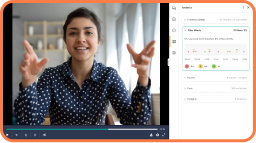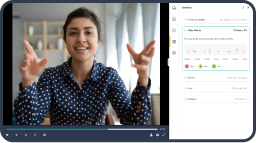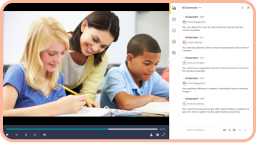JD Schramm:
But let me talk through some of the areas of effectiveness that I see it as a value for the students that I teach and the experiences that I have in oral communication. First and foremost, now I’ve always required students to watch videos of themselves teaching. Nobody likes it. It’s a hard thing to do. But it is the best way to get better at public speaking. And as I look at many of the teaching fields that you all mentioned, ASL interpretation, I think you would have to see the video of you doing that. Some people mentioned that they’re in teacher education or teacher observation. Again, seeing a video of me teaching, a video of me leading a class or facilitating a workshop, that’s where I am going to really see a, like fly on the wall, what is it that I do effectively?
So at the first level, having the students see themselves on video and having it time stamped when they looked at their notes, or when they turned their back to the audience, or when they pronounced something that was not intelligible for us. When I added in peer reviews, a couple of things happened. Well, I used to always have students fill out handwritten forms that we would then copy and distribute and get to the students, but they were hard to read. You saw them after the fact, maybe days or weeks after you had done the presentation, and it wasn’t as valuable of pure feedback as it could have been.
Once I moved to doing the pure feedback on GoReact, the students were speaking directly to one another in their own language, in their own relationship. Sometimes they were teammates who were working on a team project together. Sometimes there were people who had never seen any of the rehearsals of the talk, they only saw the final version of it. But quickly, an individual student could get six or eight or 10 perspectives on their talk that was all loaded in into GoReact, and that was all immediately available to them as soon as their peers had watched the video.
And if I say that joke didn’t land for me, well, that’s one old white guy’s opinion at the back of the room. If seven of their peers say that joke didn’t work, or that was inappropriate, or I can’t believe you used that word in class today, they got it. And so having that pure feedback enables them to really understand how this landed for their audience. It’s like the old phrase, if one person calls you a duck, big deal. If two people call you a duck, maybe you think about it. If five or six people call you a duck, you need to start looking at how you’re quacking and how you’re waddling because you’re clearly doing something that is duck-like. The peer review function allowed students to see in real time exactly within the presentation what was going on for them there.




